Duck-Duck-Goose Blue Ribbon
Winners!
We would like to begin by thanking
everyone who entered photos of their ducks and geese in our Blue Ribbon
Fundraiser. Together you have helped us raise over $500
for our sanctuary! Special thanks to those of you who
donated extra with your photo submissions--much appreciated!
With so many gorgeous photos entered,
it was not easy choosing our winners. With this in mind, we would like
to extend a warm thank you to our panel of unbiased judges
who spent hours sorting through all of your photos.
Our unanimous winner of
Most Photogenic
Photograph of 2009
is
Daisy a Toulouse goose, which was submitted by
Elizabeth Garey with the caption: "I believe I can
fly!"
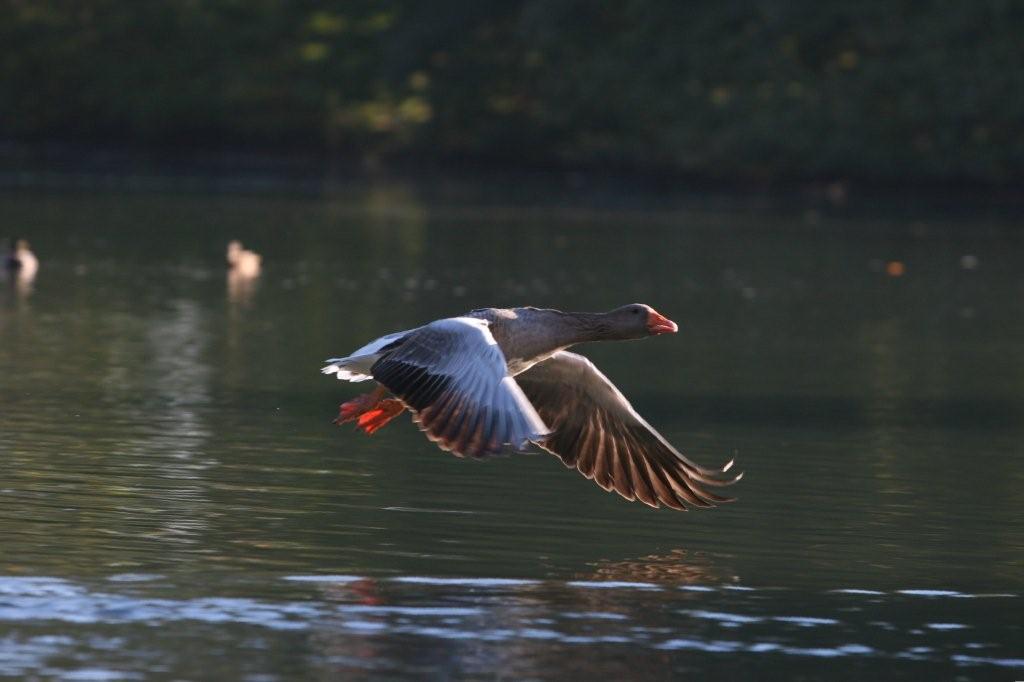
Our winner of Most Comical
Photograph of 2009 is Omalie a Pekin drake, which was
submitted by Chantal Pirro with the caption: "It
looks like choppy waters today--I might need this!!"
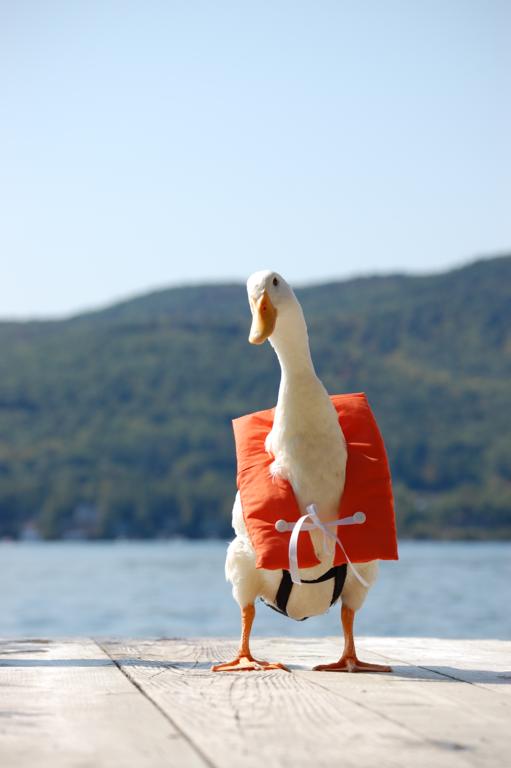
First
Prizes!
Each of our two lucky winners will
be receiving a GORGEOUS metallic blue and silver, 4 tier, rosette
ribbon with three 30 cm long tails and an imprinted silver
"1st" in the center along with a personalized Majestic Waterfowl
Sanctuary Winner's Certificate .

In addition to being
awarded Blue Ribbons and Framed Certificates, winning photos
have also been added to our
Winner's
Circle page.
Honorable
Mentions!
As much as we wish we could send
everyone a blue ribbon for their beautiful ducks and geese,
we were only able to award two winners. Still, we had some
adorable and amazing photos that truly thrilled the judges. We would like to share
with you some of the
photos that made it all the way down to the finals.
Finalists for Most Photogenic:
2nd Place:
"Rita's first time
in the big pond!"
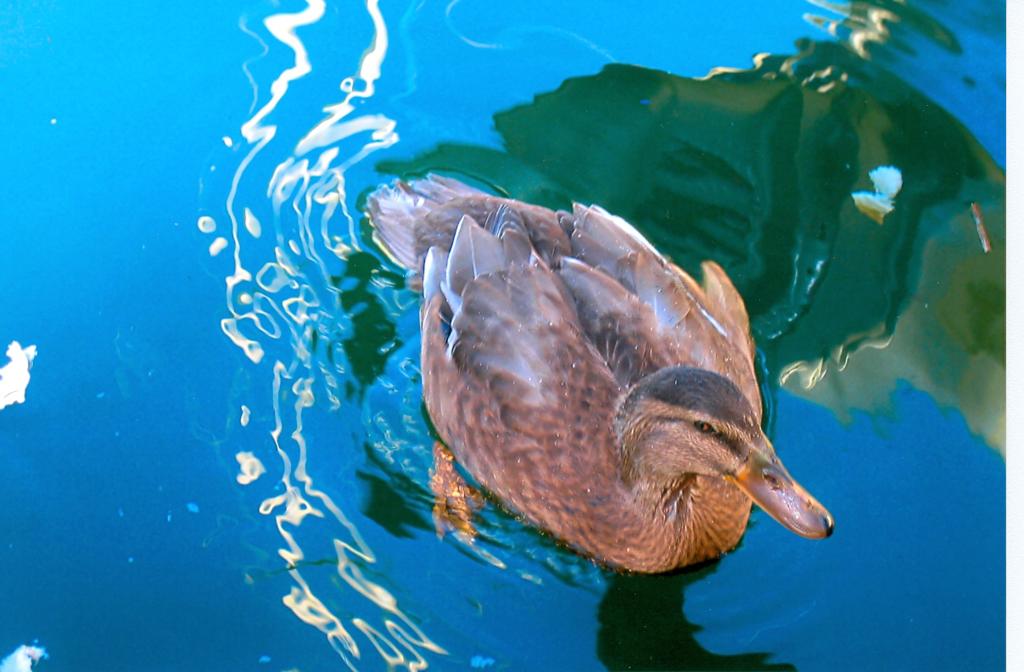
3rd Place:
"Peepers"
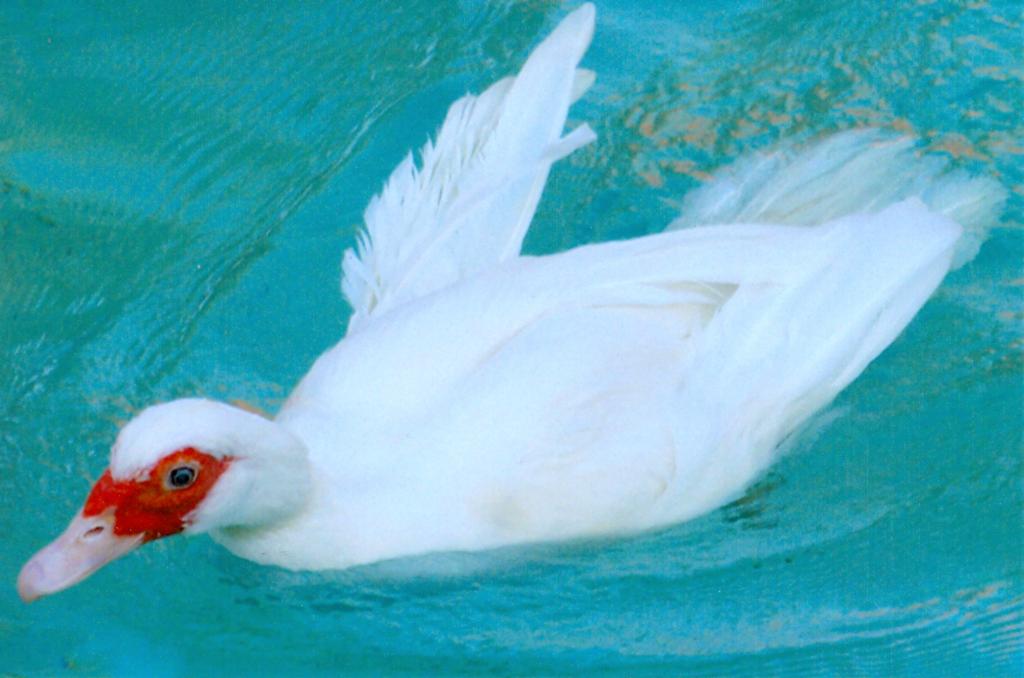
4th place:
"Dewie" a.k.a. "Olympia"
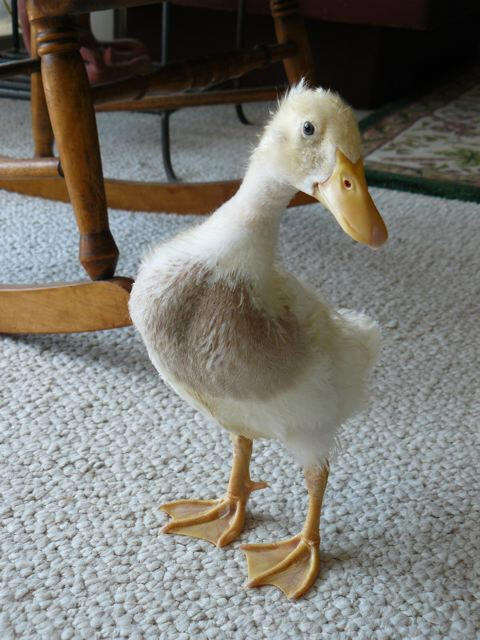
Finalists for Most Comical:
Congratulations to Lani Clover for this
photo of her Pekin drake. This was a very close contest and
the judges were torn right up until the end. Missing the
blue ribbon by only one vote, here is her boy
Hercules (a.k.a. Flipper):
2nd Place: "Got Mud?"

3rd Place: "Daffie"

4th Place featuring Dana, Michaela &
Nora:
"Hey, no photos! Can't you see I'm not dressed
yet?"
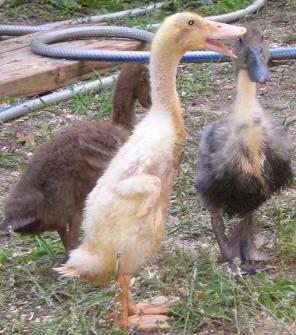
Even if your photo does not appear
here, it still landed firmly in our hearts and we loved
every single one of them. Please don't be discouraged if
your duck or goose did not win a blue ribbon this year.
Regardless as to whether or not they received a prize, they
are all winners, and we could see from your photos how truly
loved they all are.
We will be running this photo
fundraiser again beginning in the Spring of 2010, so you have a whole
year to snap more amazing photos of your gorgeous ducks and
geese. Thank you again, everyone, for your
participation in this fundraising event!
Gerty
.jpg) It
is so hard to let go of our dear feathered friends. This is
a special message for Elaine who rescued and rehabilitated
dear little Gerty and changed her whole world. We are so
sorry to hear of your loss. You made her life wonderful and
amazing. People like you make the world go round and so do ducks
like Gerty.
It
is so hard to let go of our dear feathered friends. This is
a special message for Elaine who rescued and rehabilitated
dear little Gerty and changed her whole world. We are so
sorry to hear of your loss. You made her life wonderful and
amazing. People like you make the world go round and so do ducks
like Gerty.
Have You Seen Our Video Clips at Myspace?

http://profile.myspace.com/majesticducks
Sanctuary videos change throughout the month,
so keep checking back
to see the latest!
Cecal
Worms (Heterakis gallinarum)
As we learn, we try to help you learn
as well. When newcomer Tommy Knocker's fecal test came back positive
for Heterakis gallinarum we did our research to learn more
about the parasite.
Tommy Knocker, Obama and Demi all came in from
a very polluted pond, so we were not surprised when Tommy
Knocker's
fecal came back positive. Since all three ducks entered West
Wing (our quarantine pen) together, we decided to treat all
of them for the parasite to ensure 100% eradication.
Heterakis gallinarum is a white
intestinal worm (or cecal worm) that measures up to a half
inch in length. Cecal worms spend most of their time in the
lower intestine or the ceca. This parasite falls in the
phylum: Nematoda, order: Ascaridia
and is a member of the general class of roundworms. They are
sometimes just referred to as nematodes.
Symptoms : With heavy infection,
especially in young birds, listlessness, reduced
egg production and depression are common.
Large numbers of these worms can also
cause thickening of the cecal walls, which can eventually
lead to
hemorrhages. Furthermore, this parasite often carries and
transmits Histomonas meleagridas to birds through its eggs.
Histomonas meleagridas is a microscopic
protozoan. Turkeys are much more vulnerable to Histomoniasis
(or "Blackhead Disease") than waterfowl. Ducks and geese may
be carriers, but rarely suffer infection. This means that
the cecal worm itself is more of an issue that the
Histomonas protozoan that they can potentially carry.
Rarely, a duck or goose can become
infected and the protozoan can cause serious damage to their
liver and ceca. This is called Blackhead Disease or
Histomoniasis. Symptoms include: decreased appetite,
depression, lethargy, sulfur-colored yellow droppings,
ruffled feathers and birds will often stand alone. This
condition is rare in ducks and geese, but deadly without
treatment.
Diagnosis: The presence of
cecal worms can be confirmed by providing a stool sample to
your vet for a fecal flotation to check for the presence of
eggs. Although adult worms may be seen in the feces, with so
many types of parasites out there, only a vet (or their lab)
can determine exactly which kind of worms your bird has and
then prescribe the appropriate treatment regime.
Treatment:
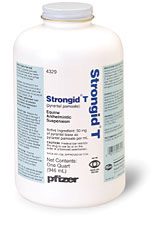 In Tommy
Knocker's case, he did not have Histomoniasis,
but he did test positive for cecal worms. Our
vet prescribed Strongid-T liquid suspension in the dose of 1 cc per 20 lb
bird (each 1 ml contains 50
mg of pyrantel base as pyrantel pamoate). Strongid-T is a milky, yellow liquid that is
loaded into a syringe and simply given orally. Each duck was
administered a single dose based
on their weight and then two weeks later, they each received a second,
single dose. Three days after their second treatment, fecal samples were taken again
from each of the three ducks and delivered to our vet to
confirm that the parasites were effectively removed from
their systems.
In Tommy
Knocker's case, he did not have Histomoniasis,
but he did test positive for cecal worms. Our
vet prescribed Strongid-T liquid suspension in the dose of 1 cc per 20 lb
bird (each 1 ml contains 50
mg of pyrantel base as pyrantel pamoate). Strongid-T is a milky, yellow liquid that is
loaded into a syringe and simply given orally. Each duck was
administered a single dose based
on their weight and then two weeks later, they each received a second,
single dose. Three days after their second treatment, fecal samples were taken again
from each of the three ducks and delivered to our vet to
confirm that the parasites were effectively removed from
their systems.
In addition:
-
Thoroughly clean infected pens
and houses
-
Remove contaminated
soil
-
Remove and replace
any
bedding (hay) every day throughout the entire treatment period.
-
Remove stools daily
(at a minimum)
-
Worms are
vulnerable to sunlight and drying; use this knowledge to
your advantage.
-
For best results,
after your birds are free of worms, remove them from the
pen and turn over the infected
soil to a depth of 8-12 inches. Seed new
grass and allow it to grow in, giving the pen a few
weeks resting period. When the grass is fully
re-established, return your birds to the area.
Roundworms are very contagious,
so be sure to clean all tools and equipment thoroughly with
a 10% bleach solution. Adhere to a strict quarantine routine until the problem is
thoroughly resolved to avoid further infection in other
animals. Avoid tracking parasites from infected pens to
clean pens.
Keep in mind, Strongid-T effectively
removes cecal worms from your duck or goose's body, but it
does not necessarily kill all of these parasites. It
mostly helps your
bird to expel them from their system.
Eggs
can remain active in the soil for up to three years, so if
you can not effectively clean your duck or goose's pen, they
are likely to re-contract the parasite.
Prevention:
-
Keep pens clean
-
Ensure you have
good drainage in your pens
-
Avoid overcrowding
your waterfowl
-
Change the
locations of their water buckets regularly
*Special
thanks to Michele for helping us understand this parasite
more thoroughly, interpreting test results, confirming
treatment options and dosages, offering extremely helpful
advice regarding quarantine considerations, providing
emotional support, and finally, thank you for editing this
article for me! Your patience and wisdom has helped ease us
through this health issue without panicking.

